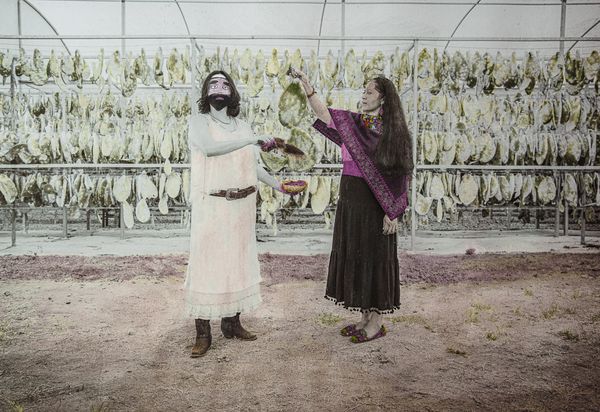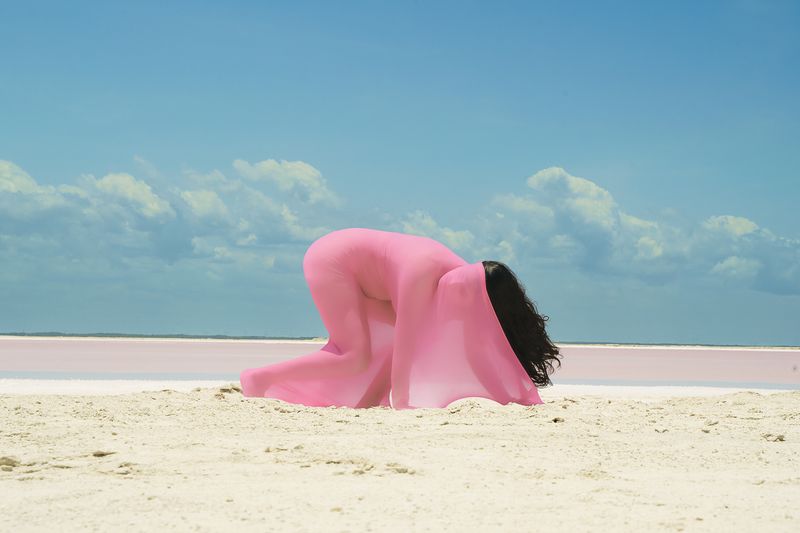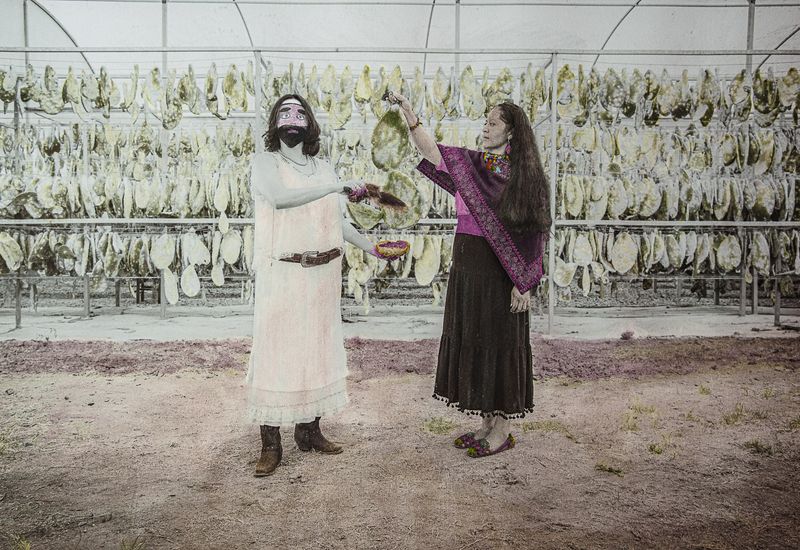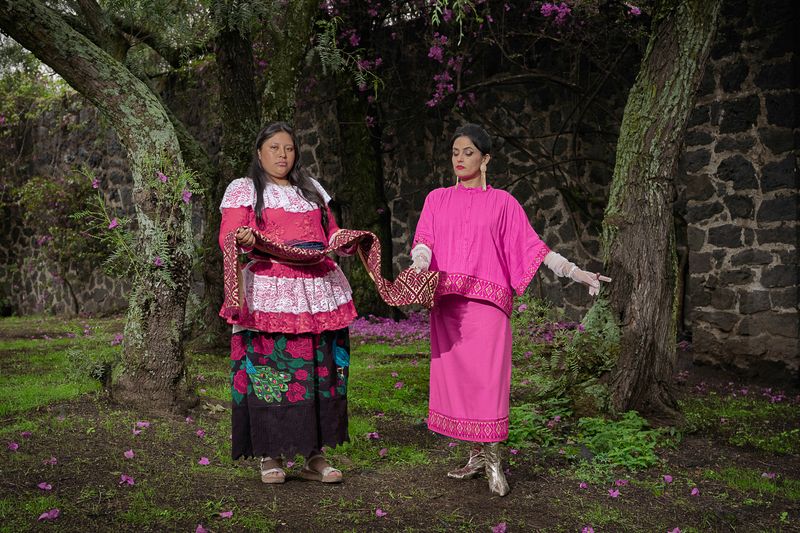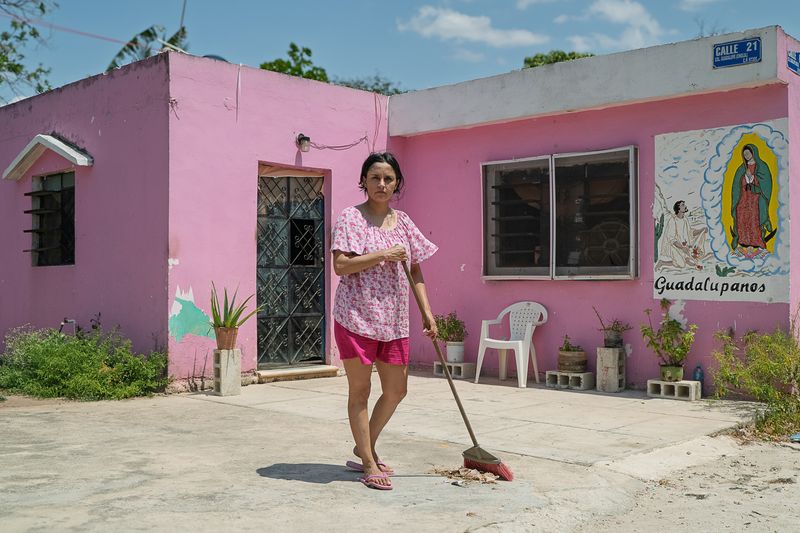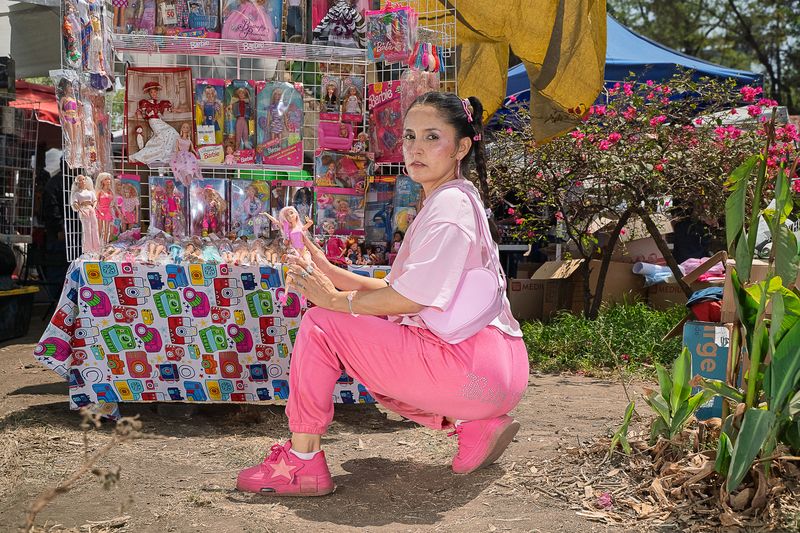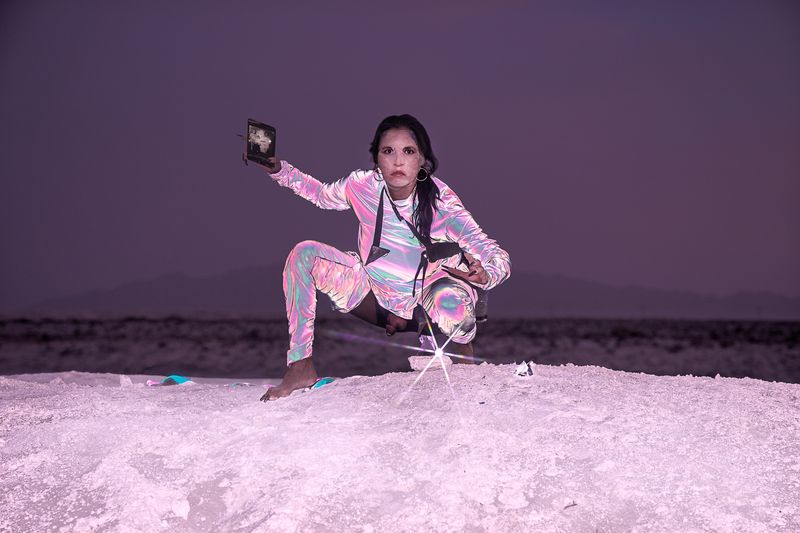The Prehistoric Color
-
Dates2022 - Ongoing
-
Author
- Locations Mérida, Mexico City, Ciudad Juárez, Ciudad Cuauhtemoc
This series of performative self-portraits explores color pink's political weight on identity, culture, and the absorption of feminize bodies into capitalist merchandizing.
I always found it difficult to use the color pink. As a teenager right at the transition of the millennium and the digitalization of life, questioning the roles assigned to me, I fled from this color, wanting to build my identity away from anything that imposed upon me values of weakness, fragility, or frivolity or anything associated with femininity. How could I not, when in the context I grew up in, in Ciudad Juárez, being or seeming fragile was not an option for survival. The obvious question would be: why does such a beautiful, vibrant, and energetic color and its association to femininity have such negative implications?
n 2018 scientific headlines proclaimed pink to be "the first color in the planet's history," asserting its origin as a prehistoric cyanobacterium whose specimens can still be found in the ecosystem of the salt separation process. This news ignited my curiosity to explore the magenta spectrum in photography, Mexican and capitalist consumer culture, its influence on bodies and identity politics, as well as its role in symbolizing the boundaries between the natural and the artificial, or the profound and the superficial. All with the help of color photography, a technology that has consolidated its meanings while simultaneously commodifying its imaginaries. The image of the prehistoric color as a 'chromatic fossil' that buries identities, but also gives rise to resistance. The image of the prehistoric color as a 'chromatic fossil' that buries identities, but also gives rise to resistances.

